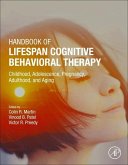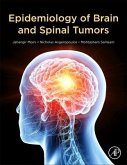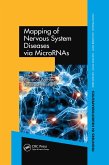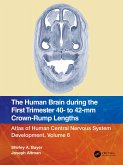Neuroeconomics
Core Topics and Current Directions
Herausgegeben:Smith, David V.; Fareri, Dominic S.; Lockwood, Patricia L.
Neuroeconomics
Core Topics and Current Directions
Herausgegeben:Smith, David V.; Fareri, Dominic S.; Lockwood, Patricia L.
- Gebundenes Buch
- Merkliste
- Auf die Merkliste
- Bewerten Bewerten
- Teilen
- Produkt teilen
- Produkterinnerung
- Produkterinnerung
The emerging field of neuroeconomics has leveraged theories and approaches from psychology, neuroscience, and economics to understand how we make decisions. This book provides comprehensive and accessible coverage of core topics and recent advances in the field of neuroeconomics and highlights emerging trends in the field. The book is divided into seven major sections, starting with a brief overview of some of the foundational work and methods in neuroeconomics. Building from this foundation, the book focuses on topical reviews that span the breadth of the field. It begins with sections on…mehr
Andere Kunden interessierten sich auch für
![Handbook of Lifespan Cognitive Behavioral Therapy Handbook of Lifespan Cognitive Behavioral Therapy]() Handbook of Lifespan Cognitive Behavioral Therapy229,99 €
Handbook of Lifespan Cognitive Behavioral Therapy229,99 €![Amyotrophic Lateral Sclerosis Amyotrophic Lateral Sclerosis]() Lina MachtoubAmyotrophic Lateral Sclerosis155,99 €
Lina MachtoubAmyotrophic Lateral Sclerosis155,99 €![Epidemiology of Brain and Spinal Tumors Epidemiology of Brain and Spinal Tumors]() Jahangir MoiniEpidemiology of Brain and Spinal Tumors220,99 €
Jahangir MoiniEpidemiology of Brain and Spinal Tumors220,99 €![Neuroglia in the Healthy Nervous System, Part I Neuroglia in the Healthy Nervous System, Part I]() Neuroglia in the Healthy Nervous System, Part I225,99 €
Neuroglia in the Healthy Nervous System, Part I225,99 €![Athymic Nude Rat Brain Atlas Athymic Nude Rat Brain Atlas]() Bengt MattssonAthymic Nude Rat Brain Atlas138,99 €
Bengt MattssonAthymic Nude Rat Brain Atlas138,99 €![Mapping of Nervous System Diseases Via Micrornas Mapping of Nervous System Diseases Via Micrornas]() Mapping of Nervous System Diseases Via Micrornas204,99 €
Mapping of Nervous System Diseases Via Micrornas204,99 €![The Human Brain during the First Trimester 40- to 42-mm Crown-Rump Lengths The Human Brain during the First Trimester 40- to 42-mm Crown-Rump Lengths]() Shirley A. BayerThe Human Brain during the First Trimester 40- to 42-mm Crown-Rump Lengths71,99 €
Shirley A. BayerThe Human Brain during the First Trimester 40- to 42-mm Crown-Rump Lengths71,99 €-
-
-
The emerging field of neuroeconomics has leveraged theories and approaches from psychology, neuroscience, and economics to understand how we make decisions. This book provides comprehensive and accessible coverage of core topics and recent advances in the field of neuroeconomics and highlights emerging trends in the field. The book is divided into seven major sections, starting with a brief overview of some of the foundational work and methods in neuroeconomics. Building from this foundation, the book focuses on topical reviews that span the breadth of the field. It begins with sections on learning, risk and uncertainty, and intertemporal choice, and then progresses to modulators of decision making, social decision making, and individual differences. The book concludes with a section on consumer neuroscience and real-world applications. Neuoroeconomics; Core Topics and Current Directions, provides a comprehensive overview of neuroeconomics through the lenses of social, cognitive, affective, and decision neuroscience.
Produktdetails
- Produktdetails
- Verlag: Springer / Springer Nature Switzerland / Springer, Berlin
- Artikelnr. des Verlages: 89254994, 978-3-032-02924-9
- Seitenzahl: 400
- Erscheinungstermin: 1. November 2025
- Englisch
- Abmessung: 235mm x 155mm
- ISBN-13: 9783032029249
- ISBN-10: 3032029244
- Artikelnr.: 74909075
- Herstellerkennzeichnung
- Springer-Verlag GmbH
- Tiergartenstr. 17
- 69121 Heidelberg
- ProductSafety@springernature.com
- Verlag: Springer / Springer Nature Switzerland / Springer, Berlin
- Artikelnr. des Verlages: 89254994, 978-3-032-02924-9
- Seitenzahl: 400
- Erscheinungstermin: 1. November 2025
- Englisch
- Abmessung: 235mm x 155mm
- ISBN-13: 9783032029249
- ISBN-10: 3032029244
- Artikelnr.: 74909075
- Herstellerkennzeichnung
- Springer-Verlag GmbH
- Tiergartenstr. 17
- 69121 Heidelberg
- ProductSafety@springernature.com
David V. Smith is an Associate Professor of Psychology and Neuroscience at Temple University, where he directs the Neuroeconomics Laboratory and serves as Associate Director of Temple’s Brain Research and Imaging Center. After earning his Ph.D. in Cognitive Neuroscience from Duke University in 2012, he completed a postdoctoral fellowship at Rutgers University–Newark and launched his lab at Temple in 2017. His research examines the neural mechanisms that support social and economic decision making across the lifespan, with particular interest in how people evaluate rewards, respond to incentives, and cooperate with others. Combining neuroimaging, computational modeling, and transcranial electrical stimulation, his work aims to advance basic understanding and inform translational applications in clinical and policy contexts. His research has been supported by the National Institute of Mental Health, the National Institute on Drug Abuse, and the National Institute on Aging. At Temple, he teaches courses on sensation and perception, decision neuroscience, behavioral economics, statistics, and functional neuroimaging. He has been named a Rising Star and a Fellow by the Association for Psychological Science. In addition, he has received Temple’s Psychology Honors Excellence in Mentoring Award as well as the College of Liberal Arts’ Presidential Faculty Award for excellence in teaching and mentoring. Finally, he also serves as an Associate Editor at Collabra: Psychology and is an active peer reviewer across leading journals in psychology, neuroscience, and decision science. Patricia L. Lockwood is a Professor of Decision Neuroscience and Wellcome Trust/Royal Society Sir Henry Dale Fellow at the University of Birmingham, where she directs the Social Decision Neuroscience Lab (www.sdn-lab.org). She was previously a Junior Research Fellow at Christ Church, University of Oxford, and a Medical Research Council Fellow at the University of Birmingham, University of Oxford and the University of Zurich. She holds a PhD in Psychology from University College London. Her lab investigates social learning and decision-making across the lifespan and in neurological and psychiatric disorders using a mixture of computational modelling, behavioural measures, self report, patient studies, and neuroimaging. Prof. Lockwood combines frameworks from psychology, economics, ecology, and decision neuroscience to capture how, when, and why people learn and make choices that have consequences for themselves and other people. She holds multiple nationalities (British, Portuguese, Brazilian), she is a Fellow of the Association for Psychological Science, and a member of the Women of the Future Network. Dominic S. Fareri is an Associate Professor of Psychology at Adelphi University where he directs the Fareri Lab for Social Learning and Decision-Making. He is also the Director of Undergraduate Psychology and Neuroscience at Adelphi University. He received his Ph.D. in Psychology at Rutgers University-Newark in 2013, and completed his postdoctoral training at the University of California, Los Angeles and Columbia University in 2015 before joining the faculty of Adelphi University in 2015. His lab investigates how the social environment becomes integrated into value-based computations supporting decision-making. Implementing functional neuroimaging alongside behavioral and computational approaches, his research draws on frameworks from psychology, cognitive neuroscience, decision neuroscience to characterize how day-to-day social contexts change our decision-making and our subjective experiences of rewards. His work has been supported by the National Institute of Mental Health and the National Science Foundation. He serves on the editorial board for Social Cognitive and Affective Neuroscience, Imaging Neuroscience and Scientific Reports.
Section 1: Foundations of Neuroeconomics: History and Methods.- Reward learning and choice: from theory to neuronal signals.- Resolving uncertainty: Foundational neuroeconomic studies of risk and ambiguity.- What lesion studies have taught us about frontal lobe contributions to decision-making.- Delay discounting: empirical foundations and future directions.- Foundations of Social Decision-Making.- Neural mechanisms of reward, decision-making and learning in a social context: insights from computational neuroimaging.- Foundations of Consumer Neuroscience.- Section 2: Valuation, Learning, Risk, and Uncertainty.- Abstract Representations of Economic Choice in the Primate Orbitofrontal Cortex.- Decomposing economic choices with drift-diffusion models.- Breaking the tug-of-war: What neuroeconomics can gain by moving past competition-only models.- Enhancing Ecological Validity in Habit Research Via Naturalistic Methods.- Pain and value-based decision-making: An introduction and implications for neuroeconomics.- Non-reinforced preference change.- Section 3: Temporal discounting, effort-based choice, and self-control.- Intertemporal Choice.- Intertemporal choices are influenced by many things beyond time itself.- The role of memory in temporal discounting.- The neuroeconomics of work: Computational and neural mechanisms of the dynamics of effort-based decisions.- Self-control and decision-making.- Section 4: Modulators of Decision-Making: Emotion and Social Context.- The value of perceived control.- Integrated Neural Circuitry Supporting Emotion Regulation and Decision Making.- Emotion and choice: The integral role of emotion in constructing value.- Modeling the social brain: Neurocomputational approaches to interpersonal learning and decision-making.- From experiences to preferences: neural insights through a naturalistic neuroimaging paradigm.- Section 5: Social preferences and social decision-making.- Prosociality and the Brain: Understanding When and Why We Help, Share, and Cooperate.- The Neural Mechanisms of Strategic Decision Making.- The neuroeconomics of social influence and contagion.- Comparative Game Theory: Bringing Ethology back into Social Decision Neuroscience.- Section 6: Individual Differences in Neuroeconomics: Age, Sex and Gender, and Clinical Variation.- Decision Neuroscience of Aging: 20 Years In.- Decision making in the aging brain: An update of the evidence base for the affect-integration-motivation framework.- Maladaptive decision making in older adults: Confirmation bias and financial exploitation.- Sex/gender in neuroeconomics.- Domain-general and domain-specific values and their role in psychopathology.- Applications and Evolution of Neuroeconomics and Reinforcement Learning Models in Substance Use Disorders.- Section 7: From Neural Data to Societal Impact: Applications of Neuroeconomics.- Applications in Consumer Neuroscience: Decoding and Neuroforecasting.- Attention Dynamics: Antecedents to Consumer Choice.- Policy consequences of the new neuroeconomic framework.
Section 1: Foundations of Neuroeconomics: History and Methods.- Reward learning and choice: from theory to neuronal signals.- Resolving uncertainty: Foundational neuroeconomic studies of risk and ambiguity.- What lesion studies have taught us about frontal lobe contributions to decision-making.- Delay discounting: empirical foundations and future directions.- Foundations of Social Decision-Making.- Neural mechanisms of reward, decision-making and learning in a social context: insights from computational neuroimaging.- Foundations of Consumer Neuroscience.- Section 2: Valuation, Learning, Risk, and Uncertainty.- Abstract Representations of Economic Choice in the Primate Orbitofrontal Cortex.- Decomposing economic choices with drift-diffusion models.- Breaking the tug-of-war: What neuroeconomics can gain by moving past competition-only models.- Enhancing Ecological Validity in Habit Research Via Naturalistic Methods.- Pain and value-based decision-making: An introduction and implications for neuroeconomics.- Non-reinforced preference change.- Section 3: Temporal discounting, effort-based choice, and self-control.- Intertemporal Choice.- Intertemporal choices are influenced by many things beyond time itself.- The role of memory in temporal discounting.- The neuroeconomics of work: Computational and neural mechanisms of the dynamics of effort-based decisions.- Self-control and decision-making.- Section 4: Modulators of Decision-Making: Emotion and Social Context.- The value of perceived control.- Integrated Neural Circuitry Supporting Emotion Regulation and Decision Making.- Emotion and choice: The integral role of emotion in constructing value.- Modeling the social brain: Neurocomputational approaches to interpersonal learning and decision-making.- From experiences to preferences: neural insights through a naturalistic neuroimaging paradigm.- Section 5: Social preferences and social decision-making.- Prosociality and the Brain: Understanding When and Why We Help, Share, and Cooperate.- The Neural Mechanisms of Strategic Decision Making.- The neuroeconomics of social influence and contagion.- Comparative Game Theory: Bringing Ethology back into Social Decision Neuroscience.- Section 6: Individual Differences in Neuroeconomics: Age, Sex and Gender, and Clinical Variation.- Decision Neuroscience of Aging: 20 Years In.- Decision making in the aging brain: An update of the evidence base for the affect-integration-motivation framework.- Maladaptive decision making in older adults: Confirmation bias and financial exploitation.- Sex/gender in neuroeconomics.- Domain-general and domain-specific values and their role in psychopathology.- Applications and Evolution of Neuroeconomics and Reinforcement Learning Models in Substance Use Disorders.- Section 7: From Neural Data to Societal Impact: Applications of Neuroeconomics.- Applications in Consumer Neuroscience: Decoding and Neuroforecasting.- Attention Dynamics: Antecedents to Consumer Choice.- Policy consequences of the new neuroeconomic framework.








